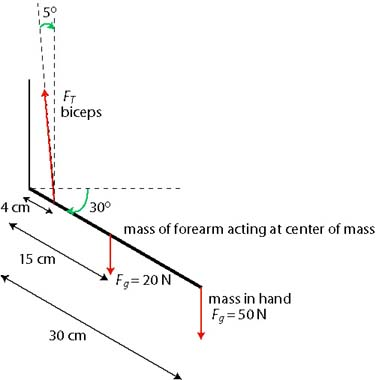Exercises on Static Equilibrium
Helena Dedic
Beware: Many of the solutions to these exercises use !
Exercise 1
A 20 kg boom of length 4 m is supported by a cable that has a breaking tension of 1000 N. The cable is perpendicular to the boom and is attached 3 m from the pivot. Find the maximum load that can be suspended from the end of the boom and the horizontal and vertical forces exerted on the hinge in this case.
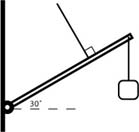
Exercise 2
A person is shown pulling down on a rope with a force of 50 N with a forearm 30° above the horizontal. The triceps are connected 1.2 cm from the pivot point and exert a vertical force. Assume the forearm is a uniform rod of mass 2 kg and length 30 cm. What is the tension in the muscle?
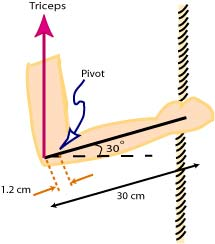
Exercise 3
A 60 kg diver stands at the end of a 3 m board of negligible mass that is attached to two supports 50 cm apart. What is the magnitude and direction of the force exerted by each support? Neglect the flexing of the board.
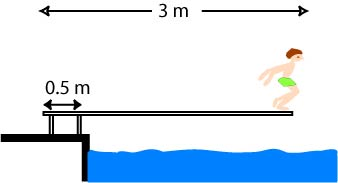
Exercise 4
The lower end of a weightless rod 2.00 m long is hinged to a wall, and a load of 200 N is suspended from its upper end. A horizontal rope 60 cm long joins the middle of the rod to the wall. Find the tension in the rope.
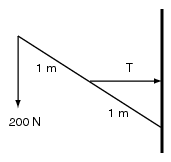
Exercise 5
A person holds a 5 kg mass in the hand while the forearm is at 30° below the horizontal. The biceps are connected 4 cm from the pivot point and act at 5° to the vertical. Take the forearm to be a uniform rod of mass 2 kg amd length 30 cm. What is the tension in the muscle?
